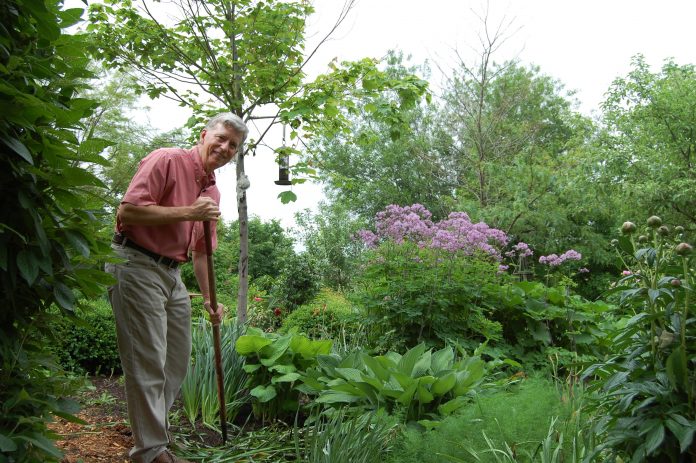No matter what the weather, the calendar tells us it is spring. We know that warmer temperatures are ahead of us and there will be countless opportunities to get your knees dirty.
If you are new to gardening or just need some important reminders of how to succeed out there, here is our primer to get you started:
- Where is the sun. Where does it come up in the morning and down at night? Which direction does your house and future garden face? These are important questions to ask yourself before you plant. A hot, sunny garden calls for distinctly different plant selection than a cool, shady one.
- Make your garden smaller than you plan. The image that you have in your head of a great looking garden will not likely consider the work of creating the garden in the first place and the time and effort of maintaining it. Until you experience this for yourself, you have no way of measuring it. Small successes will provide encouragement to go bigger in future.
- Creating a bed in an existing lawn area? Cut the lawn short and lay down 10 pages or more of newspaper, being careful not to use this column for that purpose. Pile 10 to 20 cm of triple mix (equal parts soil, compost and peat) over the newspaper, and 5 to 10 cm of cedar bark mulch over that. Water thoroughly, until the entire pile is wet.
Note: if existing soil is clay based, increase the amount of soil/mulch accordingly.
Do this as soon as you can. The longer your bed settles, the better your new garden will perform. - Plant your new garden as soon as you can acquire winter hardy plants like trees, shrubs, perennials and even perennial food plants like asparagus, raspberries, and the like. Frost sensitive plants like tomatoes and petunias are planted after threat of frost, usually around May 24.
- Shop for plants early. We anticipate another record year at garden retailers, and we know that there are shortages of many plants that will be in high demand. Shop early to avoid disappointment.
For Containers: - Choose a container that is larger than you planned (opposite of our advice for the garden). The larger the pot or container, the greater the soil volume and the better plants will perform in it. Small pots dry out quickly and demand more frequent watering. Use only quality potting soil or container mix from a brand that you trust.
- Ensure there is good drainage. Water must flow from the surface of the soil to the drainage holes freely. When water pours out the drainage holes of a window box or hanging basket, that is a good sign.
- Plant according to conditions. Much like your garden, plant sun loving plants in a sunny location. If you are in a high-rise condo or apartment, be aware that persistent wind has a drying effect. West and south exposure especially dry out containers quickly. Meaning, you will be watering more frequently.
Check your newly planted garden daily. Look for unwanted bugs or disease, pick off dead leaves and flowers and of course, check the soil for dryness.
Push your finger into the soil up to the second knuckle and if the soil is dry, apply enough water to reach the root zone.
Manage your expectations. Everyone has seen the pictures of the perfect garden and new gardeners often start out believing that they will achieve this in their first year.
Start out slow, be prepared to make mistakes, celebrate, and learn from them.
Know that even though Mark has been gardening for over 40 years, he continues to make mistakes and learn. This is part of the process and with time, you will accept it and enjoy it.
We say, “Failure? Bring it on.”
Mark Cullen is an expert gardener, author, broadcaster, tree advocate and Member of the Order of Canada. His son Ben is a fourth-generation urban gardener and graduate of University of Guelph and Dalhousie University in Halifax. Follow them at markcullen.com, @markcullengardening, and on Facebook.


